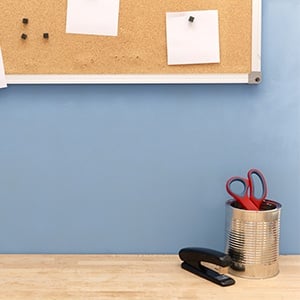 One of the most innovative office design ideas in recent years is known as “hot desking.” No, this doesn’t involve desks mysteriously disappearing from one day to the next and showing up for sale on Craigslist. And for shivering employees who work in cold offices: sorry, this has nothing to do with temperature, either.
One of the most innovative office design ideas in recent years is known as “hot desking.” No, this doesn’t involve desks mysteriously disappearing from one day to the next and showing up for sale on Craigslist. And for shivering employees who work in cold offices: sorry, this has nothing to do with temperature, either.
Rather, hot desking is when employees do not have assigned workstations or cubicles, and can therefore work anywhere they wish –– provided, of course, that space is available. As you might expect or have experienced, there are some pros and cons associated with this office design, and we highlight some of these below.
Advantages of Hot Desking
1. Cost Savings
Generally speaking, hot desking is more cost-effective than a conventional layout because businesses typically need less space than what they pay for. In some parts of the country, this can translate to thousands of dollars in savings per month. It can also encourage more efficient sharing of corporate resources (e.g. printers, scanners, shredders, etc.), which can further reduce capital and operational costs.
2. More Interaction
Cross-functional collaboration is a key priority for most businesses, but difficult to achieve. Hot desking encourages –– and in some cases, compels –– employees to interact and engage different people. Aside from the productivity and knowledge sharing benefits, this can enhance company culture.
3. Remote Capabilities
Hot desking is also ideal for businesses that offer part-time remote working opportunities, as well as those that have a large roster of mobile team members (e.g. sales reps, technicians, investigators, etc.). Instead of having these folks try and find available space in the lunchroom, lobby, or sometimes even at a nearby coffee shop, they can find suitable workspace when they need it.
Disadvantages of Hot Desking
1. Lack of Personalization
According to Gallup research, employees spend an average of 44 hours a week at work; and many exceed 50 and even 60 hours. Hot desking doesn’t allow employees to personalize their workspace with things like pictures, plants, certificates, and so on. This can lead to disengagement, absenteeism, and turnover.
2. Lack of Predictability
While some people equate the word “predictability” with “boredom,” in a work environment –– especially in some more conventional fields where things typically don’t change from day-to-day like insurance or healthcare –– predictability can be both desirable and necessary. However, with hot desking, employees don’t know where they’ll be working until they physically arrive at the office. This can cause stress and tension, an impede productivity vs. increase it.
3. Potential for Conflict
Because hot desking is a “first come first served” setup, employees who need or want to work in a certain location may feel compelled to arrive at work earlier – not to get work done, but to stake out their territory. This can be frustrating and employees who have a shorter commute may have an unfair advantage. At the same time, conjuring back to elementary school days, some employees may enlist a colleague to “save their seat” –– which can cause resentment and conflict.
The Bottom Line
Hot desking does indeed have some key advantages that are worthy of considering; especially for startups and smaller businesses that need to maximize their available space and minimize cost. However, to leverage the benefits and mitigate the risks, it is important to have a clear plan and smart policies that make things work for everyone: employers and employees alike.
To learn more, contact the interior solutions specialists at Key Interiors today. Your consultation with us is free.
For more information on open and collaborative office design, download our FREE eBook:
{{cta(‘6e7c4d88-eb76-4ed9-a6e1-b7c61d98ca99’)}}
